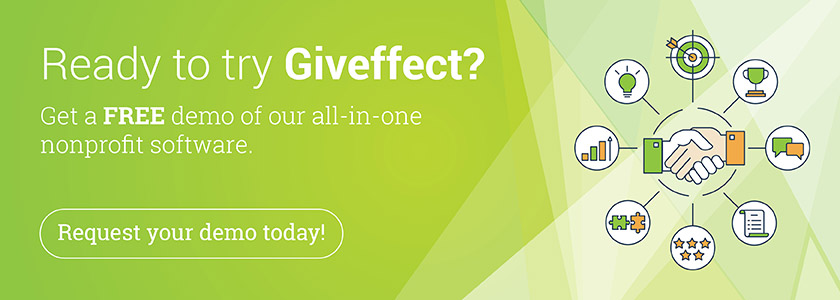What is the one secret to volunteer engagement? Ownership is the key. Establishing a sense of responsibility and ownership among your volunteers makes sure they remain excited and ready to take on new challenges.
In this article we want to look at:
What is ownership?
Ownership for a volunteer is having a part of the nonprofit process that they can control, or own. That ownership element is actually a source of engagement. To own a part of a mission requires that you maintain it, even if small in manner.
Ownership can be something as simple as control over a personal schedule, or as complex as running multiple teams of volunteers at a large event. Or it could even be something unique relative to the skills of the individual volunteer. For example, if someone is a professional photographer, they may be able to help with marketing.

And that ownership can come in a variety of ways and forms, which often depends on the volunteer themselves and the creativity of a volunteer manager. Volunteers generally want to give back. They want to support a cause. They want to make a difference.
Getting to know a volunteer and learning more about the difference they want to make is critical. And the difference they want to make can be different for different people. And for new volunteers, a nonprofit may have to temper some expectations. While older volunteers often have a solid grasp of reasonable goals and expectations.
And sometimes you may have a volunteer that has a skill, and they may not want to use that skill for the organization. And setting those expectations and boundaries can be important. A photographer does not have to take photos to add value. And roles and skills can change as a volunteer matures in your organization.
But finding a way to create realistic expectations and giving some level of control is how you can find success in giving a volunteer ownership, which improves volunteer engagement.
How do you establish ownership?
Establishing ownership can be very simple or very difficult, depending on the exact level of ownership.
Some simple ways you can create quick ownership is by allowing volunteers to have control over their volunteer calendar. While it may sound like a possible invitation to chaos, with some simple guidelines and understanding, it can create greater volunteer engagement and involvement.
Many programs can track and give volunteers access to their schedules. Then a volunteer can add or subtract new tasks or events as their schedule changes. But the critical piece is, that the volunteers must be aware of their responsibilities in the areas that they own.
If your volunteers have a schedule that needs to be kept, they need to have a way to work, through those needs. And that could be through reaching out to other volunteers, a volunteer team leader, or a staff volunteer manager. Ownership is great, but also you will need a process when certain goals or schedules cannot be met.
One nonprofit organization that uses this volunteer scheduling is the York Habitat for Humanity, of York, Pa. Volunteers can log in and view the nonprofit’s calendar and see all the volunteer events that are going on in a month. And they can click on the event and schedule their volunteer time and day.
Now, of course, the calendar needs to be managed, but according to Kasey Lofties, the Volunteer Services Manager at York Habitat, it overall is a much better experience for all involved.
“People are busy and moving around all the time, schedules change and life happens. So to have a system that lays out all the hours and dates, it inclines volunteers to be more active and volunteer more, as they can set their own pace and time that works for them. Most of the time I can direct everyone to go through the system, but we can also manually input data in some limited unique circumstances.”
And this can also allow you to track all the hours that all your volunteers have worked, and keep up with specific counts of nonprofit-specific numbers, like sweat equity for Habitat for Humanity volunteers.
Another way to create volunteer engagement is to create leadership structures among volunteers. Every volunteer will not want to be a leader, but those who can be leaders can be a massive benefit. You can train these volunteers about greater responsibilities, and then have them divide those responsibilities among assigned team member volunteers.
And this also allows the volunteer leaders to report to a volunteer manager if they have any questions, but they can answer more common questions from starting volunteers on their teams.
And you can also involve them in the planning and tracking of the volunteer process and goal setting. Volunteer leaders who are more involved in the planning will be more likely to be highly engaged in the implementation. And they take the outcomes more seriously.
That is the key. Making it personal for the volunteers and allowing them to achieve the managed goals that they can help set for themselves. If they feel that they are creating the change that they want to create, that will build energy that all volunteers can feel and get excited about.
Giveffect and Ownership
Giveffect has the tools that allow your volunteers to manage their own schedules, and allow volunteer managers to track the number of volunteer hours and schedules. This system automates most of the paperwork and makes it easier to make decisions. And that allows volunteer managers to spend more time developing volunteers and volunteer leaders, making sure that they have clear goals that improve volunteer engagement and accountability.
